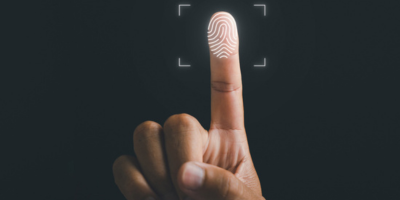With the growth of remote work, employee monitoring apps have become increasingly popular, offering a powerful boost to productivity. However, the recent breach of the WorkComposer employee monitoring app, exposing 21 million internal screenshots, serves as an alarming example of the importance of security. Having used monitoring apps, I know they come with both their advantages and drawbacks. Having demonstrated the ability to improve productivity, the Controlio app and other akin tools can be powerful when properly configured. However, employee monitoring devices can also pose risks if sensitive information is improperly handled and robust security practices are absent.
Sleepless Nights: A Massive Company Breach
In April 2025, WorkComposer became a victim of a major technological breach when an improperly configured Amazon S3 bucket allowed access to over 21 million screenshots that contained highly sensitive information like emails, internal chats, and login credentials. Exposing such information compromises the security of thousands of employees and multiple companies. Many years ago, I remember working for a company that experienced a scare because of exposed client information due to improperly configured server settings. It stands as a reminder that inadequately planned systems can prove dangerous without reliable backup plans.
This breach reveals something very important: monitoring tools gather a wealth of information, which, in the absence of robust safeguards, becomes an easy target for cybercriminals. Companies that utilize employee monitoring tools such as the Controlio app must focus on encryption and storing data safely to avert such catastrophes.
Benefits of Monitoring—When Done Right
When done securely, monitoring employees can improve business processes significantly. It offers a glimpse of activities within the organization and allows managers to identify areas that require improvement. For example, at my retail job, there was an employee monitoring tool that helped us see task completion. Many employees were consistently doing the same tasks, like stocking shelves, during slow times, leading to overstaffing. Changing schedules increased resource efficiency and improved morale. Transparency is the cornerstone of employee trust, and in 2024 it was shown that secure monitoring can enhance productivity by 18%.
Additionally, monitoring improves security by flagging risky behaviors, such as downloading files that should not be accessed without permission. Businesses that deal with highly sensitive data need this capability from secure tools. These tools enhance security without compromising privacy and exposure, and this is essential.
The Dangers of Insecure Monitoring
The WorkComposer breach showcased screenshots of isolated incidents without thinking about the greater security implications, lacking holistic thinking. Data breaches can lead to identity fraud, corporate spying, and other legal issues under GDPR or CCPA. In an organization I once worked for, an insecure monitoring tool made employees paranoid about the protection of personal data, including casual chat sessions. It eroded trust and fostered a culture of constant surveillance instead of support.
Insecure monitoring not only exposes sensitive data but also floods management with unmanageable irrelevant information along with encryption gaps and access restrictions. Companies need to utilize tools that have strong security frameworks in place to protect sensitive data.
How to Monitor Securely
Every security issue presents a unique opportunity to utilize the appropriate tools. An ideal example is the Controlio app, which features encrypted data storage, flagged inaccessible documents, and allows restricted documents to be accessed only by designated personnel, granting sensitive data viewing permissions based on roles. After my team implemented the tool, I felt at ease when verifying it had met industry standards, such as SOC 2 compliance.
To enhance the comfortability of employees, limit tracking to work-related activities only. Do not track communications that are personal or outside workplace applications and business hours only. Conducting routine audits will go a long way in ensuring that gaps do not go unnoticed before monitoring systems suffer breaches.
Trust is Built Through Transparency
Understanding what’s being tracked and why is crucial for employees. When my company implemented tracking, our manager shared it was to improve workloads, not to spy. Monitoring showed us data, like task completion rates, which felt collaborative. Transparency regarding the tools employed, such as the Controlio app, allows sharing how data improves team outcomes.
Encourage feedback and address privacy concerns. A 2023 survey indicated 70% of employees are more accepting of monitoring when balanced against privacy concerns. Openness allows a trust-killer to become a trust-builder.
Data Should Empower and Not Punish
Monitoring should lift your team, not bring them down. Use data to highlight milestones like hitting project deadlines or to offer support through coaching to help someone struggling. During my last job, our manager used monitoring data to give shout-outs to team members during meetings, which boosted morale. It illustrated the system was meant to help, not judge.
Secure monitoring helps to ensure employee data is protected from being misused, safeguarding employees. When workers feel safe, they tend to become engaged and more productive.
Last Words: Watch Your Security, Strong Teams Protect
The WorkComposer breach exposes a deep flaw: employee monitoring can work to your advantage, but only when it’s safe. Productivity is attainable without jeopardizing trust or security by using strong platforms like the Controlio app, restricting data collection, being transparent, empowering your team using insights, and trusting the process. Monitoring done right fortifies teams rather than weakening them.










Leave a Reply
You must be logged in to post a comment.